Author Archives: networkingnerd
Author Archives: networkingnerd

“I’ll get to that later.”
“I’m not feeling it right now.”
“I have to find an angle.”
“It will be there tomorrow.”
Any of those sound familiar? I know they do for me. That’s because procrastination is the beast that lives inside all of us. Slumbering until a time when it awakes and persuades us to just put things off until later. Can’t hurt, right?
The human brain is an amazing thing. It is the single largest consumer of nutrients and oxygen in the human body. It’s the reason why human babies are born practically helpless due to the size in relation to the rest of an infant. It’s the reason why we can make tools, ponder the existence of life in the universe, and write kick-ass rock and roll music.
But the human brain is lazy. It doesn’t like thinking. It prefers simple patterns and easy work. Given a choice, the human brain would rather do some kind of mindless repetitive task ad naseum instead of creating. When you think about it that makes a lot of sense from a biological perspective. Tasks that are easy don’t engage many resources. Which means the Continue reading
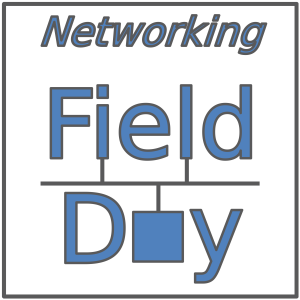
This week has been completely full at Networking Field Day 21 with lots of great presentations. As usual, I wanted to throw out some quick thoughts that fit more with some observations and also to set up some topics for deeper discussion at a later time.

Are you climbing the certification ladder? If you’re in IT the odds are good that you are. Some people are just starting out and see certifications as a way to get the knowledge they need to do their job. Others see certs as a way to get out of a job they don’t like. Still others have plenty of certifications but want to get the ones at the top of their field. This last group are the ones that I want to spend some time talking about.
Expert-level certifications aren’t easy on purpose. They’re supposed to represent the gap between being good at something and going above and beyond. For some that involves some kind of practical test of skills like the CCIE. For others it involves a board interview process like the VCDX. Or it could even involve a combination of things like the CWNE does with board review and documentation submissions.
Expert certifications aren’t designed to be powered through in a short amount of time. That’s because it’s difficult to become an expert at something without putting in the practice time. For some tests, that means meeting some minimum requirements. You can only attempt your Continue reading

How many times have your users come to your office and told you the wireless was down? Or maybe you get a phone call or a text message sent from their phone. If there’s a way for people to figure out that the wireless isn’t working they will not hesitate to tell you about it. But is it always the wireless?
During CWNP Wi-Fi Trek 2019, Keith Parsons (@KeithRParsons) gave a great talk about Tips, Techniques, and Tools for Troubleshooting Wireless LAN. It went into a lot of detail about how many things you have to look at when you start troubleshooting wireless issues. It makes your head spin when you try and figure out exactly where the issues all lie.
However, I did have to put up a point that I didn’t necessarily agree with Keith on:

We all know by now that I’m not a huge fan of keynotes. While I’ve pulled back in recent years from the all out snark during industry keynotes, it’s nice to see that friends like Justin Warren (@JPWarren) and Corey Quinn (@QuinnyPig) have stepped up their game. Instead, I try to pull nuggets of importance from a speech designed to rally investors instead of the users. However, there is one thing I really have to stand my ground against.
We’ve seen these a hundred times at dozens of events. After the cheers and adulation of the CEO giving a big speech and again after the technical stuff happens with the CTO or product teams, it’s time to talk about…nothing.
Celebrity keynotes break down into two distinct categories. The first is when your celebrity is actually well-spoken and can write a speech that enthralls the audience. This means they get the stage to talk about whatever they want, like their accomplishments in their career or the charity work their pushing this week. I don’t mind these as much because they feel like a real talk that I might want to attend. Generally the celebrity talking Continue reading

I’ve written before about rock stars and IT super heroes. We all know or have worked with someone like this in the past. Perhaps we still do have someone in the organization that fits the description. But have you ever stopped to consider how it could be our culture that breeds the very people we don’t want around?
When’s the last time you got recognition for the network operating smoothly? Unless it was in response to a huge traffic spike or an attack that tried to knock you offline, the answer is probably never or rarely. Despite the fact that networks are hard to build and even harder to operate, we rarely get recognized for keeping the lights on day after day.
It’s not all that uncommon. The accounting department doesn’t get recognized when the books are balanced. The janitorial staff doesn’t get an exceptional call out when the floors are mopped. And the electric company doesn’t get a gold star because they really did keep the lights on. All of these things are examples of expected operation. When we plug something into a power socket, we expect it to work. When we plug a router Continue reading

Who owns the network policy for your organization? How about the security policy?Identity policy? Sound like easy questions, don’t they? The first two are pretty standard. The last generally comes down to one or two different teams depending upon how much Active Directory you have deployed. But have you ever really thought about why?
During Future:NET this week, those poll questions were asked to an audience of advanced networking community members. The answers pretty much fell in line with what I was expecting to see. But then I started to wonder about the reasons behind those decisions. And I realized that in a world full of cloud and DevOps/SecOps/OpsOps people, we need to get away from teams owning policy and have policy owned by a separate team.
Where does the networking policy live? Most people will jump right in with a list of networking gear. Port profiles live on switches. Routing tables live on routers. Networking policy is executed in hardware. Even if the policy is programmed somewhere else.
What about security policy? Firewalls are probably the first thing that come to mind. More advanced organizations have a ton of software that scans for security Continue reading

Ekahau Hat (photo courtesy of Sam Clements)
You may have noticed quite a few high profile departures from Ekahau recently. A lot of very visible community members, concluding Joel Crane (@PotatoFi), Jerry Olla (@JOlla), and Jussi Kiviniemi (@JussiKiviniemi) have all decided to move on. This has generated quite a bit of discussion among the members of the wireless community as to what this really means for the company and the product that is so beloved by so many wireless engineers and architects.
Putting the people aside for a moment, I want to talk about the Ekahau product line specifically. There was an undercurrent of worry in the community about what would happen to Ekahau Site Survey (ESS) and other tools in the absence of the people we’ve seen working on them for so long. I think this tweet from Drew Lentz (@WirelessNerd) best exemplifies that perspective:
This week’s post is running behind because I’m out in San Jose enjoying great discussions from Mobility Field Day 4. This event is bringing a lot of great discussion to the community to get everyone excited for current and future wireless technologies. Some quick thoughts here with more ideas to come soon.
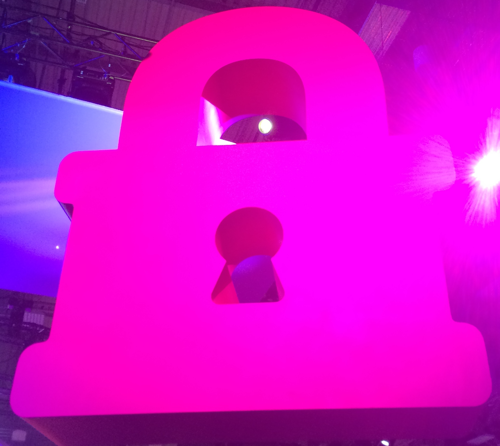
I just got back from my first Black Hat and it was an interesting experience. It was crazy to see three completely different security-focused events going on in town all at once. There was Black Hat, B-Sides Las Vegas, and DEFCON all within the space of a day or so of each other. People were flowing back and forth between them all and it was quite amazing.
A wanted to share a few quick thoughts about the event from my perspective being a first timer.
It seems like conference season never really ends. Between RSA, Cisco Live, Black Hat, and VMworld, I’m always running around to something. I enjoy being able to meet new people and talk to companies at these events but I also find that a little bit of planning ahead helps immensely.
There’s always a lot of discussion from people about what to pack for a conference. There have been some great posts written about it, like this one from Bob McCouch in 2014. He definitely covers all the important stuff that people would want to know, such as comfortable shoes and a bag big enough to carry extra things just in case you come back with enough fidget spinners to sink an aircraft carrier.
However, I’ve found in recent years that the difference between just surviving a conference and really being prepared involves a few extra items I never thought I’d need to bring back when I first started doing this in 2006. Maybe it’s the Scoutmaster in me, but being prepared has gone from being a suggestion to a necessity. And here are a few of those little necessities that I have found I can’t live without.

I’ve Continue reading

Sadly, this picture above is me. I used to think I had one of the best memories in the world. It turns out my memory is well-suited for bar trivia and routing protocol esoterics. My memory doesn’t appear so adept at remembering other little things that are of more important, such as remembering to buy a gift for a birthday or following up on an email that I sent last week.
Human brains are great at processing information. But some of the ones that are best at processing it are horrible at recalling it. I think of it not unlike a three-tiered storage array. The fast access tasks are in the fastest storage tier where they are needed. The longer term but less important info goes into the near-line tier where it can be recalled when needed. And in my case, the bandwidth to that tier is slow and unreliable.
One of my solutions to this problem is getting better with task management. As bad as my memory is, it’s also not well suited to writing things down to remember them. The irony is almost too delicious to ignore. I need to write things down so I don’t Continue reading

You probably saw the big discussion this past weekend on Twitter about 10x Engineers. It all started with a tweet about how to recognize a 10x Engineer, followed by tons of responses about how useless they were and how people that had encountered them were happy to be rid of them. All that discussion made me think back to my old days as a Senior Network Rock Star. As I reminisced I realized that I was, in fact, a 10x Engineer. And I was miserable.
I wasn’t always the epitome of engineering hatred. I used to be a wide-eyed technician with a hunger to learn things. I worked on a variety of systems all over the place. In fact, I was rising through the ranks of my company as a Novell Engineer in an environment with plenty of coverage. I was just learning the ropes and getting ready to take my place in a group of interchangeable people.
Then I started getting into networking. I spent more time learning about routers and switches and even firewalls. That meant that my skill set was changing from servers to appliances. It also meant that I was Continue reading

You’re probably familiar with Cisco DevNet. If not, DevNet is the place Cisco has embraced outreach to the developer community building for software-defined networking (SDN). Though initially cautious in getting into the software developer community, Cisco has embraced their new role and really opened up to help networking professionals embrace the new software normal in networking. But where is DevNet going to go from here?
DevNet wasn’t always the darling of Cisco’s offerings. I can remember sitting in on some of the first discussions around Cisco OnePK and thinking to myself, “This is never going to work.”
My hesitation with Cisco’s first attempts to focus on software platforms came from two places. The first was what I saw as Cisco trying to figure out how to extend the platforms to include some programmability. It was more about saying they could do software and less about making that software easy to use or program against. The second place was actually the lack of a place to store all of this software knowledge. Programmers and developers are fickle lot and you have to have a repository where they can get access to the pieces they needed.
DevNet was that Continue reading

It’s a crazy idea to think that a network built to be completely decentralized and resilient can be so easily knocked offline in a matter of minutes. But that basically happened twice in the past couple of weeks. CloudFlare is a service provide that offers to sit in front of your website and provide all kinds of important services. They can prevent smaller sites from being knocked offline by an influx of traffic. They can provide security and DNS services for you. They’re quickly becoming an indispensable part of the way the Internet functions. And what happens when we all start to rely on one service too much?
The first outage on June 24, 2019 wasn’t the fault of CloudFlare. A small service provider in Pennsylvania decided to use a BGP Optimizer from Noction to do some route optimization inside their autonomous system (AS). That in and of itself shouldn’t have caused a problem. At least, not until someone leaked those routes to the greater internet.
It was a comedy of errors. The provider in question announced their more specific routes to an upstream customer, who in turn announced them to Verizon. After that all bets are Continue reading
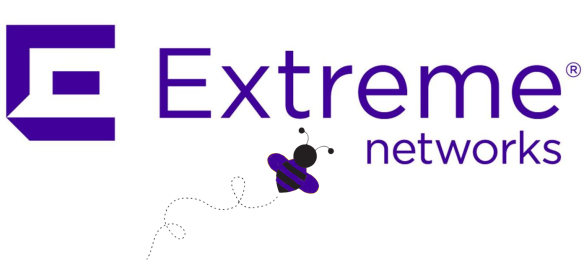
I must admit that I was wrong. After almost six years, I was mistake about who would end up buying Aerohive. You may recall back in 2013 I made a prediction that Aerohive would end up being bought by Dell. I recall it frequently because quite a few people still point out that post and wonder what if it’s happened yet.
Alas, June 26, 2019 is the date when I was finally proven wrong when Extreme Networks announced plans to purchase Aerohive for $4.45/share, which equates to around $272 million paid, which will be adjust for some cash on hand. Aerohive is the latest addition to the Extreme portfolio, which now includes pieces of Brocade, Avaya, Enterasys, and Motorola/Zebra.
Why did Extreme buy Aerohive? I know that several people in the industry told me they called this months ago, but that doesn’t explain the reasoning behind spending almost $300 million right before the end of the fiscal year. What was the draw that have Extreme buzzing about this particular company?
The most apparent answer is HiveManager. Why? Because it’s really the only thing unique to Aerohive that Extreme really didn’t have already. Aerohive’s APs Continue reading
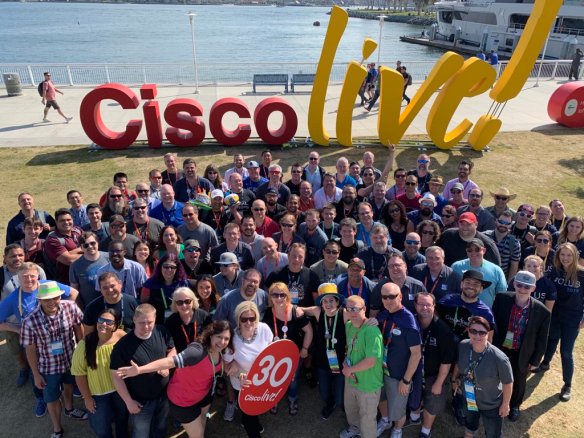
The 2019 Cisco Live Sign Photo
Another Cisco Live is in the books for me. I was a bit shocked to realize this was my 14th event in a row. I’ve been going to Cisco Live half of the time it’s been around! This year was back in San Diego, which has good and bad points. I’d like to discuss a few of them there and get the thoughts of the community.
Good: The Social Media Hub Has Been Freed! – After last year’s issues with the Social Media Hub being locked behind the World of Solutions, someone at Cisco woke up and realized that social people don’t keep the same hours as the show floor people. So, the Hub was located in a breezeway between the Sails Pavilion and the rest of the convention center. And it was great. People congregated. Couches were used. Discussions were had. And the community was able to come together again. Not during the hours when it was convenient. But a long time. This picture of the big meeting on Thursday just solidifies in my mind why the Social Media Hub has to be in a common area:
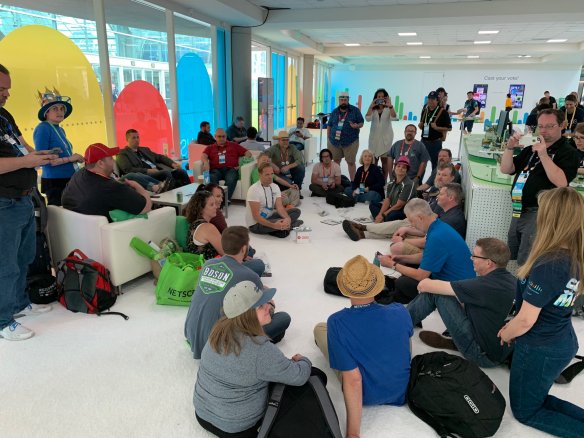
You don’t get this kind of Continue reading

Today is the day that the CCIE changes. A little, at least. The news hit just a little while ago that there are some changes to the way the CCIE certification and recertification process happens. Some of these are positive. Some of these are going to cause some insightful discussion. Let’s take a quick look at what’s changing and how it affects you. Note that these changes are not taking effect until February 24, 2020, which is in about 8 months.
The first big change comes from the test that you take to get yourself ready for the lab. Historically, this has been a CCIE written exam. It’s a test of knowledge designed to make sure you’re ready to take the big lab. It’s also the test that has been used to recertify your CCIE status.
With the new change on Feb. 24th, the old CCIE written will go away. The test that is going to be used to qualify candidates to take the CCIE lab exam is the Core Technology exam from the CCNP track. The Core Technology exam in each CCNP track serves a dual purpose in the new Cisco certification program. If you’re Continue reading

You’ve probably heard many horror stories by now about the crazy interviews that companies in Silicon Valley put you though. Sure, some of the questions are downright silly. How would I know how to weigh the moon? But the most insidious are the ones designed to look like skills tests. You may have to spend an hour optimizing a bubble sort or writing some crazy code that honestly won’t have much impact on the outcome of what you’ll be doing for the company.
Practical skills tests have always been the joy and the bane of people the world over. Many disciplines require you to have a practical examination before you can be certified. Doctors are one. The Cisco CCIE is probably the most well-known in IT. But what is the test really quizzing you on? Most people will admit that the CCIE is an imperfect representation of a network at best. It’s a test designed to get people to think about networks in different ways. But what about other disciplines? What about the ones where time is even more of the essence than it was in CCIE lab?
I was at Palo Alto Networks Ignite19 this past Continue reading

Sometimes I read the headlines when a company gets acquired and think to myself, “Wow, that was a great move!” Other times I can’t really speak after reading because I’m shaking my head too much about what I see to really make any kind of judgement. With that being said, I think it’s time to look at three recent acquisitions through the lens of everyone’s favorite spaghetti western.
The Good – Palo Alto Buys Twistlock: This one was kind of a no-brainer to me. If you want to stay relevant in the infrastructure security space you’re going to need to have some kind of visibility into containers. If you want to stay solvent after The Cloud destroys all infrastructure spending forevermore, you’re going to need to learn how to look into containers. And when you’re ready and waiting for the collapse of the cloud, containers are probably still going to be relevant.
Joking aside, this is a great move for Palo Alto. They’re getting a lot of container talent and can start looking at all kinds of ways to integrate that into their solution sets. It lets people in the organization justify the spend they have for security Continue reading